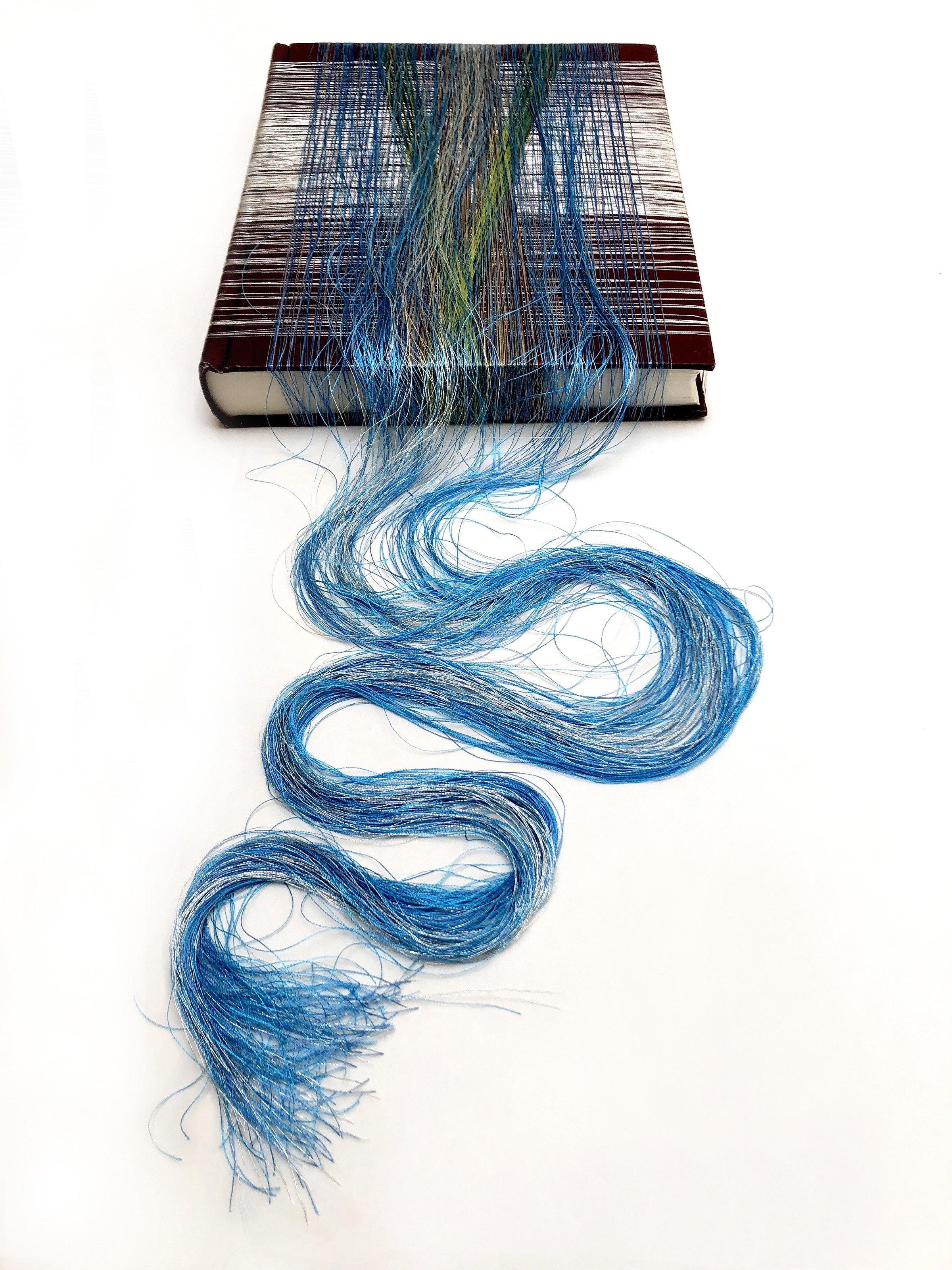
Pulp Fiction | Artists’ Books
August 9 - 31, 2025
Opening Reception | Saturday August 9th . 4-6pm
Participating artists include : Gail Barker, Linda Ekstrom, Leslie Lyman, Rhoda Rosenberg, Louise Strawbridge and Jeffrey Marshall; with ‘altered newspapers’ by Willie Alexander; and papier-mâché sculptures by Geoffrey Bayliss.
The Yale Library has a wonderful (and lengthy) history of artists’ books. Herewith are excerpts from that text:
“The first forerunner to contemporary artists' books is probably the British artist William Blake, who worked in the late 1700's and early 1800's. Blake was a poet, painter and printmaker. He wanted to integrate his visual and written work.
“Often, the first suggestion of the book format combined with the work of a visual artist is credited to France in the 1890's. The Parisian art dealer Ambroise Vollard was paramount in the use of the book format to showcase the work of an artist, the livre d'artiste.
“ … attempts to unify text and image, and to give the images as much prominence as the text.
“Around the same time period, artists, writers, and political thinkers were publishing pamphlets, posters, and magazines expressing their avant-garde ideas.
“The Russian avant-garde was an early hotbed of activity for radical new uses of the book format. [6] Beginning in the early 1910's the Russian Futurists began making books as art, in much the same spirit of the 1960's in America: using readily available (and cheap) materials and methods of creation, new approaches to the combination of text and images, a somewhat irreverent attitude towards the establishment,
“Typography became the next arena of innovation. The merging of text and image was radical. Now the text itself was manipulated to express ideas visually as well as literally spelling out the message. The Italian Futurist (1910's) and German Bauhaus (1920's and 30's) movements were both instrumental in this aspect.
“The photograph also contributed to contemporary artists' books.
“The Dada movement (late 1910's, early 1920's) in Europe used books as a means of expression, and their "ethical and political concern for the function of art in society" is a precursor to the American idea behind using books as art during the 1960's. [11]
“In Europe Post-WWII and in the early 1960's here in America, a surge of artists' books in the contemporary notion began to emerge.
“The improvements in technology (photocopy and offset printing vs. hand set type and lithography) not only allowed economic ease of access to a means to produce books, but played right into the ideas of a "democratic" form of art, with complete control over production and distribution.
“In the next two decades, artists' books were influenced by trends in the art world: the prominence of sculpture in the 1970's and installation art in the 1980's. [13] Performance and conceptual art were also intertwined with the artists' books movement. From here to the present, artists' books have continued to be made and continued to be misunderstood because of their undefinable nature.
“As we think back to William Blake and the livre d'artiste, we can see how a radical new form became codified over time. The shifting nature of contemporary artists' books has allowed them to participate in each new wave of ideas. A definition would thwart the one unifying factor through this century: the malleability of the form that makes it applicable in each time period. Let's keep the definition of artists' books open, and let the exploration continue.”
















